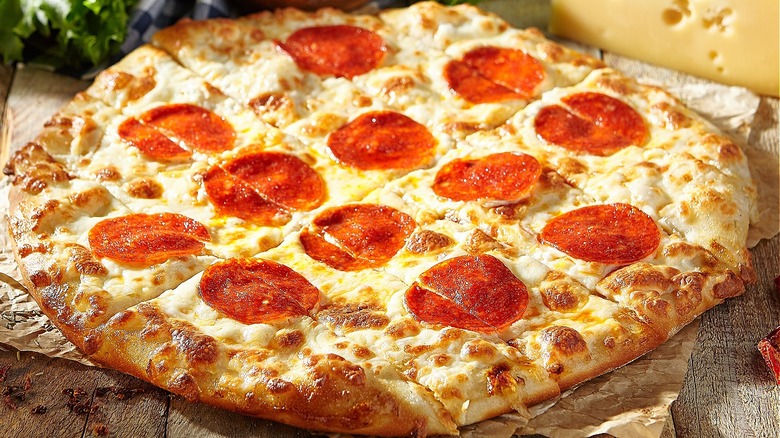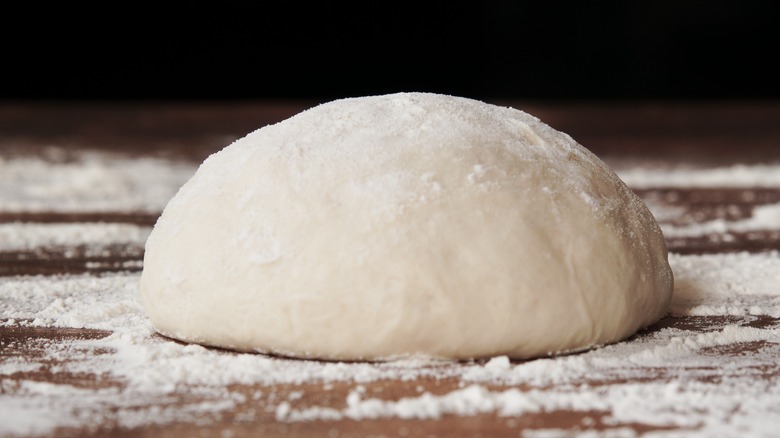The Yeast Mistake To Avoid When Making Pizza Dough
There's no denying the draw pizza has over us. Even in its most basic form, this humble dish of bread, tomato sauce, and cheese excites our brains, making us salivate and fueling a craving that only the fatty, sweet, and salty pizza can quell.
In many ways, pizza is the perfect food. According to food scientists, the combination of tomato and cheese creates a flavor compound that tastes even better when eaten together. When pizza is cooked at high temperatures, two chemical reactions take place. Ingredients with sugar, like sauce and dough, caramelize, becoming sweeter and more complex. Similarly, high-protein ingredients like cheese and meat toppings are browned due to the Maillard reaction, which converts amino acids and sugars into a new, deeper flavor and color, per The Washington Post.
Although there are over 75,000 pizzerias throughout the U.S., people are making pizza at home more frequently (per Gardening Etc.). While it can be made in an oven or on the stove, the availability of portable pizza ovens, sold in different sizes and gas, wood, wood pellets, charcoal, or a combination, has made making the dish more accessible than ever.
The foundation of good pizza, the pizza dough, can be purchased at the supermarket or a local pizzeria. However, making your own can be rewarding and infinitely better than anything purchased at the market. Avoid making this common yeast mistake for delicious, crispy, yet chewy pizza dough.
Slow fermentation
Pizza dough is just flour, water, salt, and yeast, with a touch of sugar or honey used to sweeten the dough and activate the yeast. The type of flour — all-purpose, bread, or 00 — the amount of yeast used, its hydration, and how long you dedicate to the process will all affect the end results. While homemade pizza dough is simple to make, a search on Google will yield millions of recipes emphasizing how achieving the perfect crust can be tricky.
According to Pro Home Cooks, a common mistake made is speeding up the process by adding too much yeast to the dough. Yeast is a living organism that feeds off the sugar in food and converts it to alcohol and carbon dioxide, which allows the dough to grow. There are a few types of yeast available at supermarkets, per BBC Good Food. Instead of adding an entire envelope of dry yeast, they recommend 1 ½ teaspoons to allow a slow fermentation and give the dough time to develop flavor.
Chef Duff Goldman agrees. On Twitter, the "Ace of Taste" host broke down his process for pizza dough, dedicating 24 hours between mixing the dough and shaping it and another 24 hours before making the pizza. During this three-day process, the dough rests in the refrigerator, developing a complex flavor.
Slow fermentation adds hours to days to the pizza dough-making process, but thankfully, great pizza cooks in mere minutes in a hot pizza oven, so your patience is rewarded.

